The ambulance of the future? A spaceship-like flying vehicle can fly through the air at a speed of 458 km/hour and can reach patients within eight minutes
>
It may seem like something out of the classic science fiction series Thunderbirds.
But this spaceship-like flying vehicle could be an ambulance of the future.
That’s because it’s designed to rush to emergency situations at a speed of 250 knots (288 mph), aiming to arrive on scene in just eight minutes.
Although currently just a concept, the JA1 Pulse will be built to transport emergency equipment and a trained medical professional to remote and difficult-to-reach areas in rural areas.
The crew member will be both a pilot and a first responder.
Innovative: this spaceship-like flying vehicle could well be the ambulance of the future. It’s just a concept at the moment, but the JA1 Pulse will be built to transport emergency equipment and a trained medical professional to remote areas
The company behind the project, California-based Jump Aero, has already been awarded a contract worth £2.9 million ($3.6 million) by the US Air Force.
It has also received a commercial order from Denmark-based Falck Ambulance Services and hopes to produce the first proof-of-concept prototype soon.
Jakob Riis, CEO of Falck, said: “Falck is excited to partner with Jump Aero to help us revolutionize the future of emergency services.
“By seeking professional assistance to reach hard-to-reach locations in a timely manner, Jump Aero will help Falck deliver better services to our customers.”
The eVTOL (electric vertical take-off and landing) aircraft has a so-called ‘tail-sitter’ design, meaning it sits with the nose and propellers pointing upwards.
The vehicle then takes off vertically like a helicopter, but tilts sideways so that it moves horizontally once it reaches cruising altitude.
This means that the pilot/first responder is in a standing position when the JA1 Pulse is on the ground and lies on their stomach once in the air.
Despite this, they can look forward and down through the windows in the nose and belly of the vehicle at all times, while a parachute is provided if something goes wrong.
Once the aircraft is underway, the design allows it to travel much faster and more efficiently than a helicopter.

Vision: The trained medical professional on board will be both the pilot and the first responder
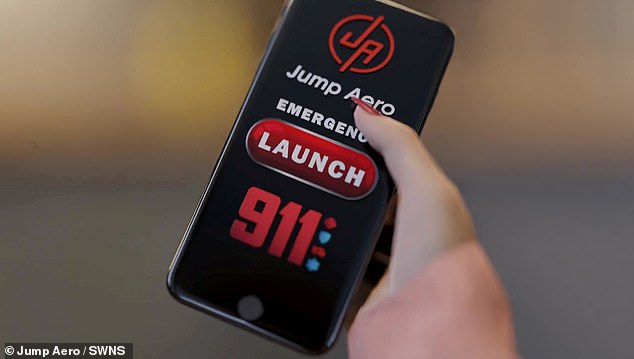
Investment: The company behind the project, California-based Jump Aero, has already been awarded a contract worth £2.9 million ($3.6 million) from the US Air Force
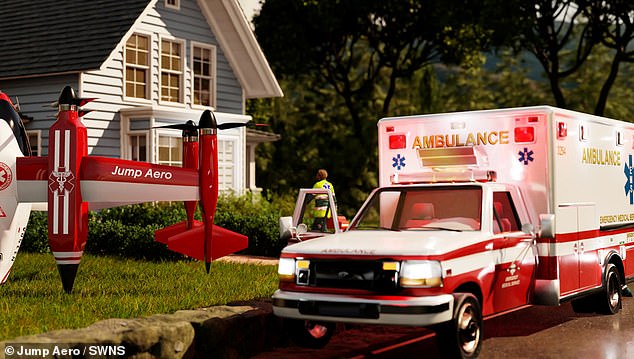
Side by side: However, the craft will not replace traditional ambulances because it is not built to transport patients. The aim is to simultaneously deploy a JA1 Pulse and a road ambulance in the event of an emergency in a remote area
This is because it will be built with structural elements between the eight propellers that will serve as biplane wings.
Jump Aero wants the plane to be able to reach a speed of 250 knots, which the company says would make it the fastest form of sustainable personal transportation.
The goal is to arrive at any location within a 50 km radius in less than eight minutes.
However, it will not replace traditional ambulances as it is not built to transport patients.
The aim is to deploy both a JA1 Pulse and a road ambulance at the same time in an emergency in a remote area, with the aircraft being able to arrive first on scene with life-saving equipment.
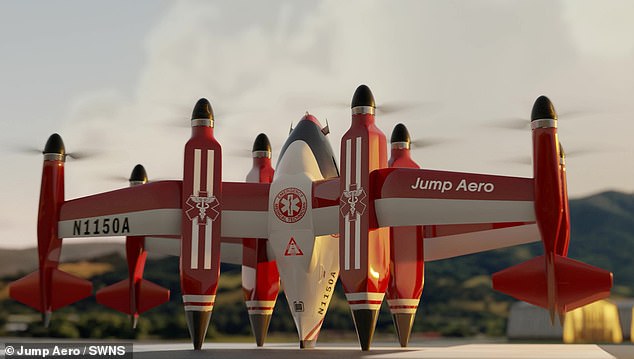
What it will look like on the ground: The eVTOL (electric vertical take-off and landing) craft has a so-called ‘tail-sitter’ design, meaning it sits with the nose and propellers pointed upward
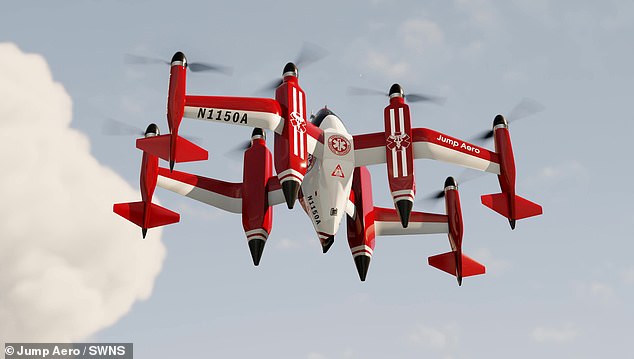
It’s going up! The vehicle then takes off vertically like a helicopter, but tilts sideways so that it travels horizontally once it reaches cruising altitude
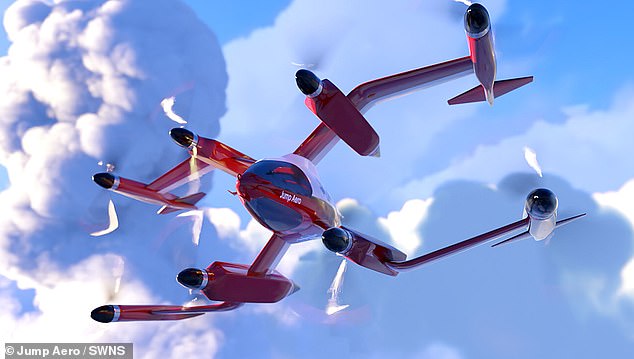
Fast: Once the aircraft is underway, the design allows it to travel much faster and more efficiently than a helicopter. This is because it will be built with structural elements between the eight propellers that will serve as biplane wings
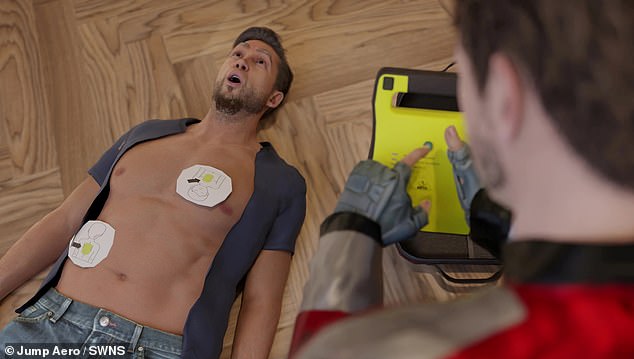
Purpose: A first responder might provide care to a patient until a land ambulance arrives

Similar: It looks like something from the classic sci-fi series Thunderbirds (pictured)
A first responder could then provide care to a patient until the land ambulance arrives.
Jump Aero has yet to reveal how much the JA1 Pulse costs to build.
“In terms of timescales, the JA1 Pulse will come to market as soon as it is proven to be safe,” a spokesperson added.
“That process will take as long as necessary, but our current expectation is 2027.”
US Air Force Lieutenant Colonel John Tekell said: ‘Jump Aero’s aircraft concept and development strategy, focused on rapid emergency response, has potential for defense-related use cases and is complementary to the other eVTOL programs the US offers.
“The Air Force Agility Prime program has been working on it so far.
“We look forward to working with Jump Aero to help mature their dual-use technology.”
